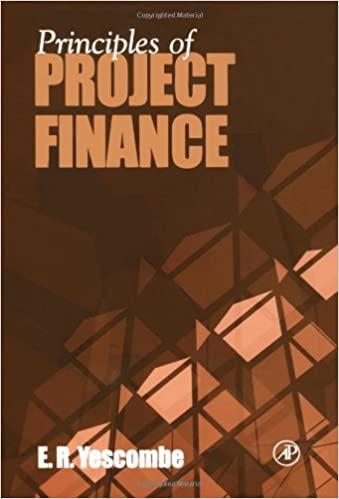Question
Accounting for Leases Equipment On January 1, 2017, William A. Hazel, Inc., (Lessee) a US Virginia corporation entered into a three-year, non-cancellable lease agreement (the
Accounting for Leases Equipment
On January 1, 2017, William A. Hazel, Inc., (Lessee) a US Virginia corporation entered into a three-year, non-cancellable lease agreement (the Lease) for heavy construction equipment from Caterpillar, Inc. (Lessor) on January 1, 2017. The lease is for a period of three years expiring on December 31, 2019 (Lease Term). Lease payments of $100,000 are due to Lessor on December 31 of each year. Other expenses of $2,000 per year (e.g., insurance, taxes, maintenance) are to be paid by Lessee. The Lessor did not incur any initial direct costs.
The Lease contains no purchase or renewal options and the equipment is turned back to Lessor on the expiration of the lease. The remaining useful life of the equipment is four years. The fair value of the equipment at inception of the Lease Term is $265,000. Lessee has guaranteed $20,000 as the residual value at the end of the Lease Term. The $20,000 represents the expected value of the leased equipment at the end of the Lease Term. The salvage value of the equipment is expected to be $2,000 after the end of its useful life.
The Lessees incremental borrowing rate is 11 percent (Lessors implicit rate is 10 percent and is calculable by the lessee from the lease agreement).
Your firm has been retained by the Lessee to determine the appropriate accounting treatment for the Lease. The Lessee Controller has provided you with each calculations and related journal entries prepared by two of Lessees staff accountants. You are asked to review each computation and determine the correct accounting treatment for the Lease. Calculations and journal entries prepared by the staff accountants are as follows:
Staff Accountant 1: The equipment turns back to Lessor at the end of the Lease Term the Lease should be classified as operating lease. Journal entries to be posted at December 31, 2017 to 2019 are as follows:
Lease expense 100,000
Insurance expense 2,000
Cash 102,000
Staff Accountant 2:
Staff accountant 2 states that since the Lease Term is three years and the useful life of the equipment is four years the Lease Term is for a significant portion of the useful life of the equipment, and thus should be classified as a finance/capital lease.
Since the Lessees incremental borrowing rate is greater than the Lessors implicit rate in the Lease, the present value of the minimum lease payments would be calculated as follows using the Lessees incremental borrowing rate. This would result in a value of the lease equipment and lease obligation to Lessee as follows:
Present value of the minimum lease payments = $100,000 x 2.4437 = $244,370.
Since interest incurred on the Lease by Lessee has to be charged using the straight-line method, the following lease amortization table shows an allocation of the annual payment of $100,000 the interest expense and the reduction in the lease liability.
| Year | Cash Payment | Interest Expense 11% | Reduction In lease Obligation | Balance of Lease Obligation |
| 0 |
|
|
| 244,370 |
| 1 | 100,000 | 26,881 | 73,119 | 171,251 |
| 2 | 100,000 | 26,881 | 73,119 | 98,131 |
| 3 | 100,000 | 26,881 | 73,119 | 25,012 |
Journal entry in Year 1 to record the first payment:
Lease obligation 73,119
Interest expense 26,881
Rent expense 2,000
Cash 102,000
Required: 1. Using FASB determine the appropriate accounting for the lease including background information, supporting calculations, lease amortization table and journal entries for the first year of the lease.
2. Determine whether Staff Accountant 1 was correct or incorrect and explain your reasoning.
3. Determine whether Staff Accountant 2 was correct or incorrect and explain
4. Summarize your analysis
Step by Step Solution
There are 3 Steps involved in it
Step: 1

Get Instant Access to Expert-Tailored Solutions
See step-by-step solutions with expert insights and AI powered tools for academic success
Step: 2

Step: 3

Ace Your Homework with AI
Get the answers you need in no time with our AI-driven, step-by-step assistance
Get Started


